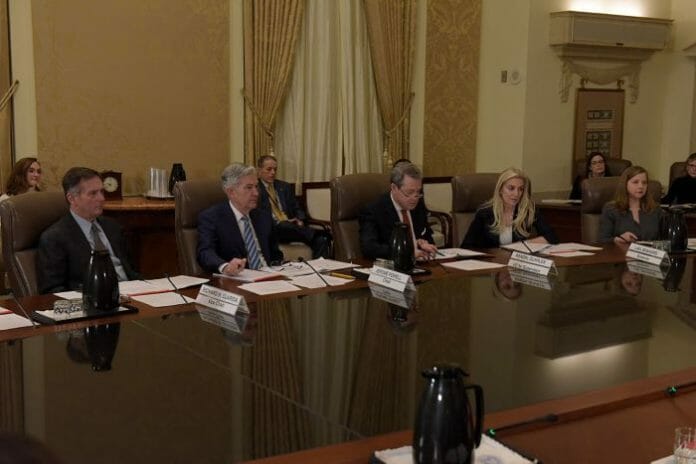As expected, the Federal Open Market Committee (FOMC) chose to pause rates during its policy meeting on Thursday. This marks the first time in 11 meetings that the Committee has maintained the current fed funds rate.
The decision to keep the target range at 5.00%-5.25% had unanimous support from all 11 eligible voting members.
Additionally, the FOMC decided to maintain its current pace of quantitative tightening, allowing up to $60 billion of Treasury securities and up to $35 billion of mortgage-backed securities to roll off its balance sheet per month.
The post-meeting statement showed minimal changes compared to the previous statement on May 3. The Committee reiterated that economic activity is experiencing modest growth, while highlighting low unemployment and elevated inflation levels. By keeping rates unchanged, the FOMC aims to gather additional information and assess its implications for monetary policy.
The Committee restated its commitment to consider various factors when determining the potential need for “additional policy firming” to achieve a return of inflation to 2 percent over time. These factors include the cumulative impact of monetary policy tightening, the time it takes for monetary policy to affect economic activity and inflation, as well as economic and financial developments.
Dot Plot Shifts Up
Based on the Summary of Economic Projections (SEP) released by the FOMC four times a year, it appears that most Committee members believe that additional policy tightening may be necessary in the coming months.
However, the most recent dot plot shows a shift in the median dot to a range of 5.50%-5.75% by the end of this year (Figure 2). This suggests that the median FOMC member now believes an additional 50 bps of tightening will be required to achieve the goal of 2 percent inflation over time.
Despite this, the bond market currently expects only one more 25 bps rate hike by the end of 2023, likely to occur at the July meeting.
What led to the change in the dot plot? The answer lies in the FOMC’s revised forecasts for unemployment and inflation.
Furthermore, the median forecast for the core rate of PCE inflation at the end of 2023 has been raised from 3.6% in March to 3.9% currently. Interestingly, none of the 18 current FOMC members believe that a rate cut by the end of the year would be appropriate.
What conditions would prompt the FOMC to consider easing policy? Unless unexpected negative shock hits the economy in the coming months, the Committee will require evidence of sustained inflation returning to 2%. Although recent months have seen a slight decline in the inflation rate, only an optimist would interpret this as a sign of a return to 2% inflation.
From my perspective, the year-over-year inflation rate doesn’t have to precisely reach 2% for the Committee to consider easing policy. However, I forecast that the core PCE deflator will increase at an annualized rate of 2.8% in Q4-2023 compared to Q3- 2023, which I believe is still too high to warrant rate cuts. Consequently, I don’t anticipate a rate cut this year, aligning with the current thinking of the FOMC.
Market commentary and analysis from Luca Santos, currency analyst at ACY Securities









